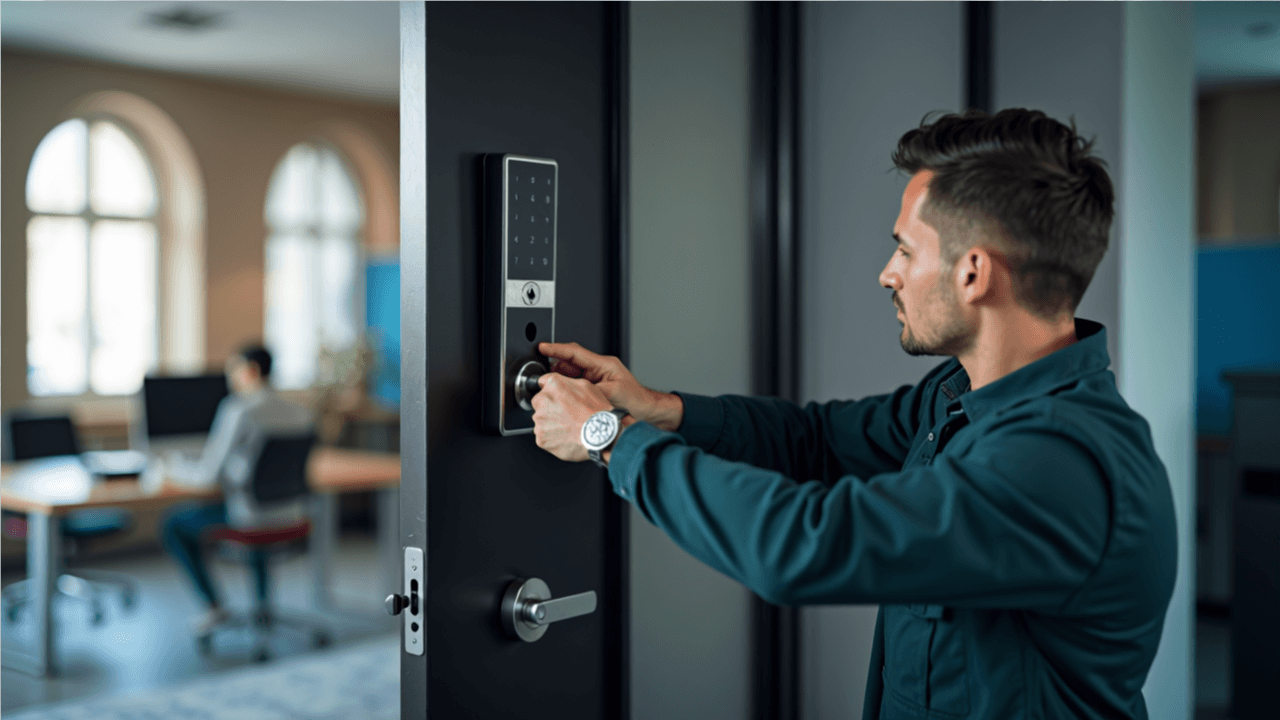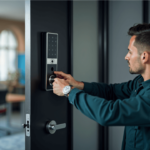Securing your workplace is a top priority, whether you run a small office, a large corporate building, or a retail space. A solid lock system is one of the first and most important layers of defense against theft, unauthorized entry, and security breaches. But with so many lock options available, how do you choose the right one for your business?
This guide will walk you through different types of locks, how to assess your workplace’s security needs, and best practices for maintaining and upgrading your locks.
Step 1: Assess Your Workplace’s Security Needs
Before you start shopping for locks, take a step back and assess your security risks. Ask yourself the following questions:
- What kind of business do you run? A retail store has different security needs than a tech office or a warehouse.
- How many employees will need access?
- Do you need to restrict access to certain areas (e.g., server rooms, storage areas, or executive offices)?
- Have there been past security breaches or break-ins?
- Do you require locks that integrate with a larger security system (e.g., cameras, alarms, or keycard access)?
Once you have answers to these questions, you’ll be better equipped to choose the right locks for your specific needs.
Step 2: Understand The Different Types Of Locks
Not all locks are created equal. Here’s a breakdown of the most common types and their best uses in workplace security:
Deadbolt Locks
Deadbolts are a staple in workplace security, providing a high level of protection against forced entry.
- Single-cylinder deadbolts require a key from the outside and a thumb turn from the inside. They’re great for offices and storage rooms.
- Double-cylinder deadbolts require a key on both sides, adding extra security but potentially posing a fire safety risk if an emergency exit is needed.
Keypad And Keyless Entry Locks
Keypad locks eliminate the need for physical keys and allow employees to enter a passcode instead.
- Pros: Easy access control, no lost keys, and codes can be changed when needed.
- Cons: Codes can be shared or forgotten, and some models require battery power.
Smart Locks
Smart locks are becoming increasingly popular in modern workplaces. They can be controlled remotely via smartphone apps, allowing you to lock/unlock doors from anywhere.
- Best for: Offices that need to monitor access and integrate with security systems.
- Features to look for: Mobile app access, auto-lock functionality, and compatibility with keycards or biometrics.
High-Security Locks
High-security locks are designed to resist picking, drilling, and bumping—common methods criminals use to bypass standard locks.
- Look for: Locks with high-security ratings (such as ANSI Grade 1), reinforced strike plates, and restricted key duplication.
- Best for: Businesses storing valuable inventory or sensitive data.
Master Key Systems
A master key system allows different levels of access within your workplace. For example, employees may have keys that only open certain doors, while managers have keys that open all doors.
- Pros: Convenient for large workplaces with multiple access levels.
- Cons: If a master key is lost or stolen, security could be compromised.
Padlocks And Cabinet Locks
For securing individual storage spaces, safes, or cabinets, high-quality padlocks or cabinet locks provide extra security.
- Best for: Locking up cash registers, documents, or sensitive materials.
- Consider: Combination locks vs. keyed locks based on convenience and security needs.
Step 3: Match Locks To Different Entry Points
Not all doors require the same level of security. Here’s how to strategically choose locks based on location:
- Main Entry Doors: Use high-security deadbolts, smart locks, or electronic access control systems for maximum protection.
- Internal Office Doors: Keypad locks or master key systems work well to regulate employee access.
- Storage Rooms: Secure with high-security locks or electronic access control.
- Server Rooms: Consider biometric or keycard access to restrict entry to authorized personnel.
- Emergency Exits: Ensure compliance with fire safety regulations while maintaining security (e.g., panic bars with alarmed exit mechanisms).
Step 4: Consider Additional Security Features
To strengthen workplace security, consider these extra measures:
- Reinforced Strike Plates: Prevent doors from being kicked in.
- Security Cameras: Monitor entry points and integrate with smart lock systems.
- Alarm Systems: Pair with locks to alert you in case of unauthorized access.
- Access Logs: Many electronic and smart locks track who enters and exits, adding another layer of security.
Step 5: Maintain And Upgrade Your Locks Regularly
Even the best locks can become ineffective if they aren’t maintained. Here’s how to keep your workplace locks in top shape:
- Regular Inspections: Check for signs of wear, rust, or tampering.
- Rekey or Change Locks as Needed: If an employee leaves or a key is lost, rekey the locks or change access codes.
- Battery Replacement: For electronic locks, keep batteries fresh to avoid being locked out.
- Upgrade When Necessary: Security technology evolves, and upgrading your locks periodically helps keep your workplace protected.
Secure Your Business Success
Choosing the right locks for your workplace isn’t just about security—it’s about peace of mind. By assessing your specific needs, understanding different lock options, and implementing a strategic security plan, you can protect your business from unauthorized access and potential threats.
Whether you go with high-security deadbolts, smart locks, or a comprehensive access control system, investing in the right locks is a crucial step toward a safer, more secure workplace. Take the time to choose wisely, and don’t hesitate to consult a security professional if needed. Your business’s security is worth it.





